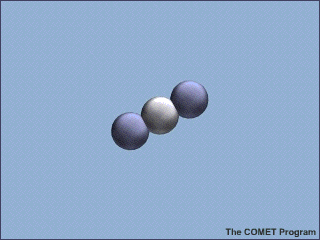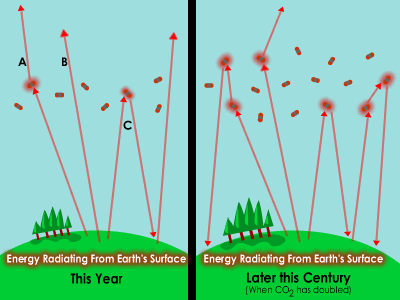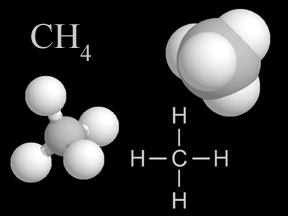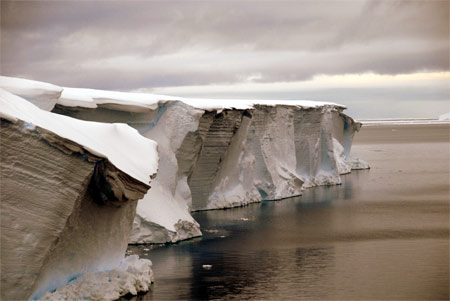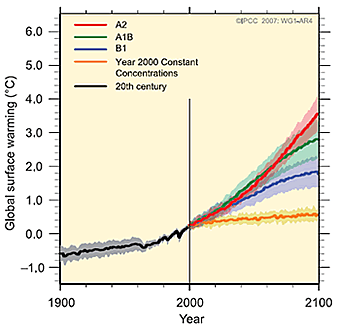
IPCC Working Group 1 - Physical Science Basis (2007) at http://www.ipcc.ch/publications_and_data/ar4/wg1/en/spmsspm-projections-of.html
Early Studies of the Impact of Carbon Dioxide on Climate
The study of the effect of greenhouse gases on the Earth's temperature goes back almost 200 years, involving some of the most learned scientists of the modern era over generations. A brief overview of the history of this research is presented below. For a detailed description, see comprehensive summaries provided by the American Institute of Physics and Skeptical Science.
- In 1824, Jean Baptiste Joseph Fourier (1768 - 1830, the French mathematician after whom Fourier series, Fourier transforms, and Fourier's Law are named) explained the Earth's greenhouse effect. He showed that a planet of Earth's size and distance from the Sun should be colder than it is, and argued that the atmosphere acted as an insulator to the planet.
- In 1864, John Tyndall (1820-1893, an Irish physicist known for his studies of diamagnetism) showed that water vapor, carbon dioxide, methane, and other hydrocarbons were effective at absorbing infrared radiation.
- In 1896, Svante Arrhenius (1859 - 1927, a Swedish chemist and physicist who won the Nobel Prize in Chemistry in 1903) presented an analysis of how changing levels of carbon dioxide in the atmosphere would effect atmospheric temperature as a result of the greenhouse effect. His calculations showed that doubling of the percentage of carbon dioxide in the air would raise the temperature of the earth's surface by 4°.
- In 1931, American physicist E. O. Hulbert shared an analysis that agreed with Arrhenius's estimate of the impact of carbon dioxide on atmospheric temperature. He showed that "doubling or tripling the amount of the carbon dioxide of the atmosphere increases the average sea level temperature by about 4° and 7°K, respectively; halving or reducing to zero the carbon dioxide decreases the temperature by similar amounts."
- In 1938, English Steam Engineer Guy Stewart Callendar showed that temperature and carbon dioxide levels in the atmophere had risen over the preceding 50 years, and that the gas was an effective absorber of infrared radiation. This, he argued, would lead to atmospheric warming in the future.
- Beginning in 1956, Gavin Norman Plass (1920 - 2004, a Canadian physicist who led the department at Texas A&M University) published a series of scientific papers investigating the effect of carbon dioxide in the atmosphere on climate. His calculations showed that doubling carbon dioxide in the atmopshere would warm the planet by 3.6°C. He predicted that CO2 levels in 2000 would be 30% higher than in 1900, given the rate of increase at the time, and that the planet would be about 1°C warmer in 2000 than in 1900.
- In 1967, the first computer climate model calculations showing the effect of increasing carbon dioxide on atmospheric temperature were published by Syukuro Manabe (Japanese meteorologist and climatologist) and Richard Wetherald, working at the Geophysical Fluid Dynamics Laboratory in Washington DC. Their results showed that, in the absense of unknown feedbacks such as changes in clouds, doubling carbon dioxide would result in approximately 2°C increase in global temperature.
By the mid 1960s, evidence of changes in the amountl of carbon dioxide in the atmosphere was becoming abundant, thanks to measurements made around the world, but particularly by Charles Keeling at the Mauna Loa Observatory in Hawaii. Thanks to the persistence of Dr. Keeling and his research group at the Scripps Institution of Oceanography, we have a record of carbon dioxide abundance in the atmosphere going back to 1957 - called the Keeling curve. In the same time period, advances in computing technology and modeling techniques became very rapid, and therefore rapid progress was made in the use of computer models to understand Earth's climate.






